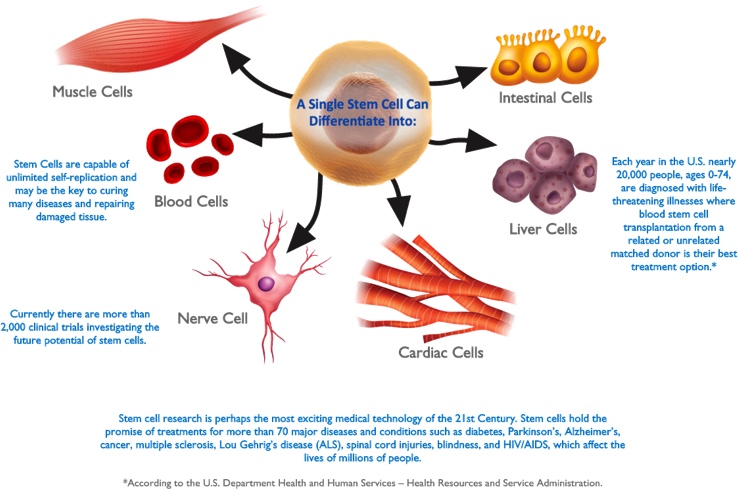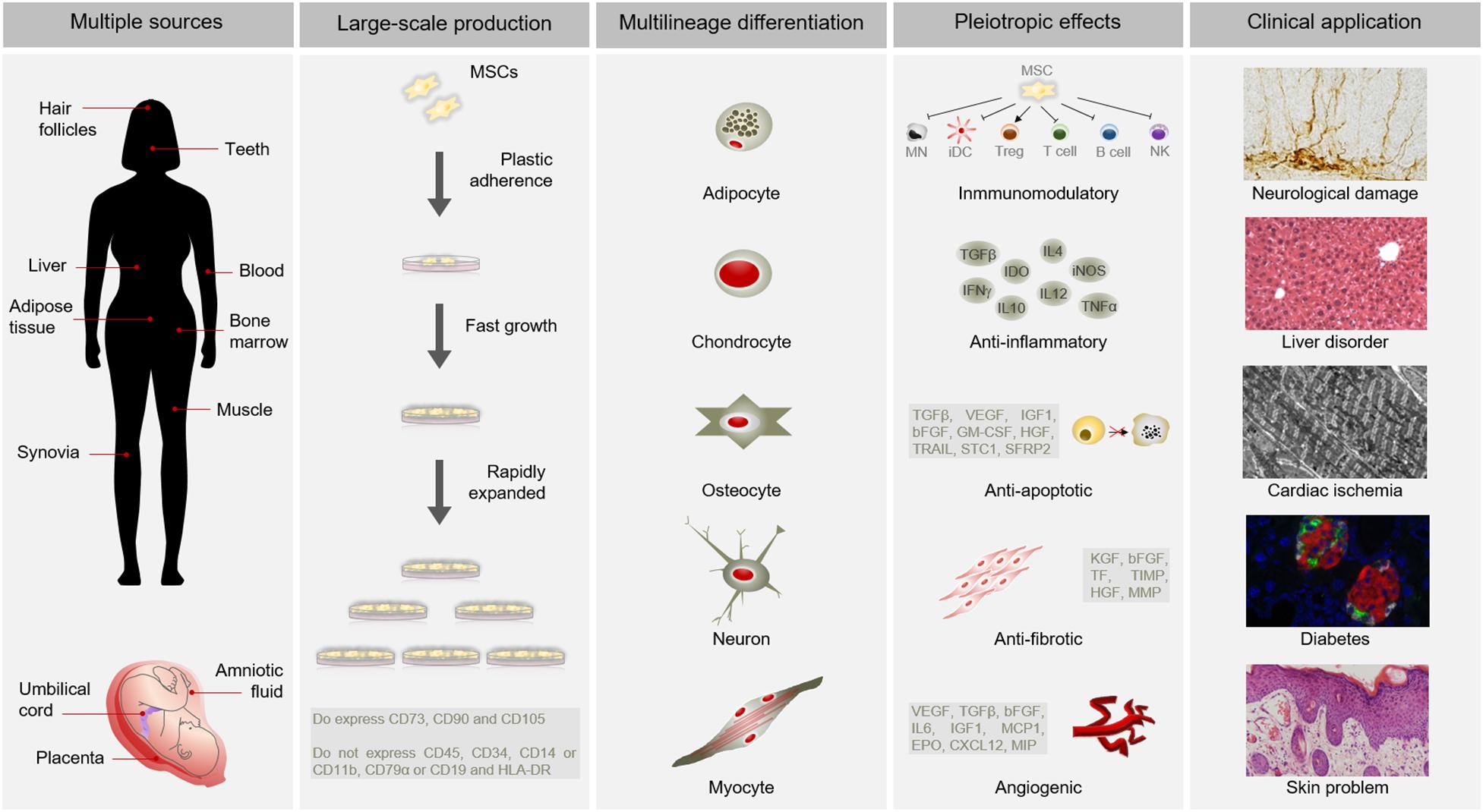
[/image][=video]
[/video]
By taking advantage of the regenerative capacity of stem cells or other regenerative cells, medical professionals can advertise the development of brand-new skin cells, enhance capillary development, and promote the regrowth of harmed muscle mass or bone tissue. This has considerable implications for the treatment of chronic wounds, burns, and terrible injuries, possibly minimizing recovery time and boosting person results. Cell regrowth therapy offers an unique approach to handle and possibly turn around the development of these problems.
By targeting the underlying reasons for deterioration, such as cartilage material damage or intervertebral disc degeneration, regenerative therapies intend to restore the integrity and feature of affected tissues, easing discomfort and boosting flexibility.
While significant progression has been made in establishing alternative resources of stem cells, such as induced pluripotent stem cells, moral worries still surround the area. Balancing the possible advantages of cell regrowth therapy with honest factors to consider and making certain liable study methods remain to pose obstacles for scientists and policymakers. Regardless of substantial progress, there are still technical limitations to overcome in cell regeneration therapy.
Attending to these technological restrictions is important to advancing the area and allowing more people to profit from cell regeneration treatment. Governing pathways and approval processes for cell regrowth treatment existing significant obstacles.
Menopause Therapy

The possible applications of cell regrowth therapy are substantial and varied. In the future, we may see regenerative treatments becoming common therapies for a vast array of problems, including neurological problems, heart diseases, and musculoskeletal injuries. Study into cells and body organ regeneration may cause the advancement of useful replacements for damaged body organs, decreasing the requirement for transplantation.
The widespread adoption of cell regrowth therapy can have a profound effect on medical care systems worldwide. By using more reliable and targeted treatments, cell regrowth therapy has the prospective to decrease healthcare prices connected with persistent problems and long-lasting treatment. Much shorter recovery times, improved results, and less problems might bring about substantial renovations in patient high quality of life.
Scientists have actually lengthy attempted to comprehend the body's recovery procedures and utilize them in the therapy of injury and deterioration. Part of the body's adaptive actions to injury originates from cellular elements and factorssuch as platelets and certain kinds of cellsand substances made by or consisted of within them. The impacts put in by these mobile factors help in tissue remediation and regrowth in a healthy body.
Aid create a setting conducive to cells healing, with regulating inflammation and boosting neighborhood cells and bioactive healthy proteins. The goal of biologic therapy is to improve the recovery and regional environment of damaged cells be it muscles, tendons, tendons, cartilage material, joints, fascial, or nerves. It is also presently being utilized to deal with the discomfort and inflammation that come with degenerative conditions, such as arthritis.
While significant development has been made in establishing different resources of stem cells, such as induced pluripotent stem cells, moral problems still surround the area. Stabilizing the possible benefits of cell regeneration treatment with moral considerations and guaranteeing accountable research study techniques proceed to present obstacles for researchers and policymakers. In spite of considerable progress, there are still technical restrictions to conquer in cell regeneration treatment.
Menopause Therapy
The precise control and adjustment of cell habits and distinction are also locations that call for further improvement. Resolving these technological constraints is critical to progressing the field and permitting more clients to gain from cell regeneration treatment. Regulative paths and authorization processes for cell regeneration therapy present substantial difficulties. The fast-paced nature of clinical improvements often exceeds the regulative structures, developing a need for versatility and efficiency in evaluating and approving brand-new therapies.
The prospective applications of cell regrowth treatment are substantial and varied. In the future, we may see regenerative therapies ending up being common treatments for a wide variety of problems, consisting of neurological problems, cardio illness, and musculoskeletal injuries. Research into tissue and body organ regrowth might lead to the advancement of useful replacements for harmed organs, decreasing the demand for hair transplant.
The prevalent adoption of cell regrowth therapy might have an extensive effect on healthcare systems worldwide. By providing more effective and targeted treatments, cell regrowth therapy has the potential to reduce healthcare expenses connected with persistent conditions and long-lasting care. Much shorter healing times, enhanced end results, and less problems could bring about considerable improvements in patient top quality of life.
Medical Group
Researchers have long tried to understand the body's healing processes and use them in the treatment of injury and deterioration. Component of the body's adaptive feedbacks to injury comes from mobile elements and factorssuch as platelets and specific kinds of cellsand materials made by or contained within them. The results applied by these cellular factors assist in cells reconstruction and regeneration in a healthy and balanced body.
Help develop an environment for cells recovery, with modulating inflammation and stimulating neighborhood cells and bioactive proteins. The goal of biologic treatment is to improve the recovery and local atmosphere of hurt cells be it muscle mass, ligaments, tendons, cartilage, joints, fascial, or nerves. It is likewise currently being utilized to address the discomfort and inflammation that come with degenerative problems, such as arthritis.
While substantial progression has been made in developing different resources of stem cells, such as induced pluripotent stem cells, honest problems still border the field. Balancing the potential benefits of cell regrowth treatment with honest factors to consider and ensuring responsible research practices remain to present challenges for scientists and policymakers. In spite of considerable progress, there are still technical restrictions to get over in cell regeneration therapy.
Addressing these technological constraints is vital to advancing the area and enabling more people to benefit from cell regrowth treatment. Regulative pathways and authorization procedures for cell regrowth treatment present significant difficulties.
The possible applications of cell regeneration treatment are vast and varied. In the future, we might see regenerative therapies ending up being common treatments for a broad array of problems, consisting of neurological problems, cardio illness, and bone and joint injuries. Study right into cells and organ regrowth may result in the advancement of practical substitutes for harmed body organs, lowering the need for transplant.
Hormone Therapy
The extensive adoption of cell regrowth treatment could have a profound impact on medical care systems worldwide. By offering even more reliable and targeted therapies, cell regrowth therapy has the possible to decrease health care prices associated with persistent conditions and lasting care. Much shorter recovery times, boosted end results, and fewer difficulties could cause significant improvements in patient top quality of life.

Scientists have actually long tried to understand the body's recovery procedures and utilize them in the therapy of injury and degeneration. Part of the body's adaptive reactions to injury originates from cellular parts and factorssuch as platelets and specific kinds of cellsand materials made by or consisted of within them. The impacts exerted by these mobile variables help in tissue repair and regeneration in a healthy body.
Aid create a setting for tissue healing, with modulating swelling and promoting neighborhood cells and bioactive proteins. The purpose of biologic treatment is to improve the recovery and neighborhood environment of hurt cells be it muscle mass, tendons, tendons, cartilage, joints, fascial, or nerves. It is likewise currently being used to address the discomfort and inflammation that accompany degenerative problems, such as arthritis.
Navigation
Latest Posts
Regenerative Therapy local to Romulus, Michigan
Medical Group
Stem Cell Therapy